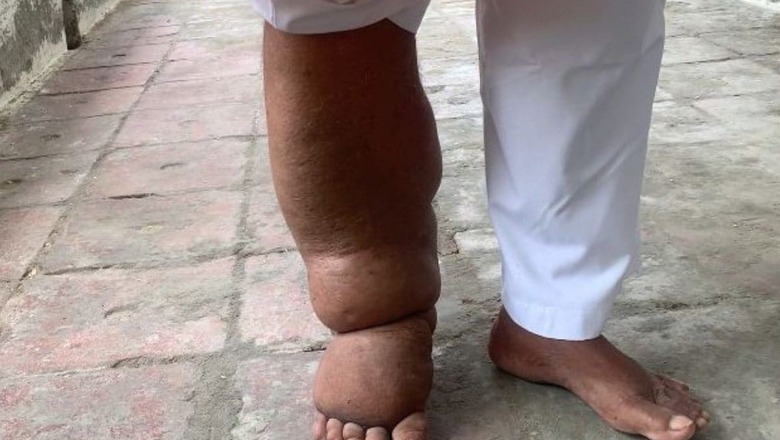
views
It’s almost four decades since Mahendra Pratap Singh first noticed his right leg swell. At first, the change was negligible. But, with time, his leg and foot became deformed, resembling an elephant’s leg with extremely thick and rough skin.
Singh suffers from Lymphatic Filariasis (LF), also known as elephantiasis or hathipaon. LF is a neglected tropical disease caused by a mosquito-borne parasitic worm that resides inside the body and wreaks havoc with the lymph system.
For Singh, the disease not only brought pain but also social stigma as no one wanted to sit with him, fearing the spread of infection. This also translated to loss of income.
There are many others like Singh, living across the villages of Uttar Pradesh’s Kanpur, who have been living with swollen limbs or other organs caused by thread-like worms.
These worms live in the human lymph system, disrupt the body’s fluid balance and weaken immunity. The nesting of these worms in the lymph leads to the collection of fluid mostly in the legs, but also occurs in the arms, breasts, and genitalia.
Unfortunately, lack of awareness had led people like Singh to seek unconventional and bizarre remedies such as repeated scorpion bites, snake oil messages, and submerging swollen limbs in earthen pits with burning coal above among others.
India’s journey in eliminating LF
India bears around 40 per cent of the global disease burden. The country’s National Health Policy 2002 had set a goal to eliminate LF as a public health problem in India by 2015, which was later extended to 2017.
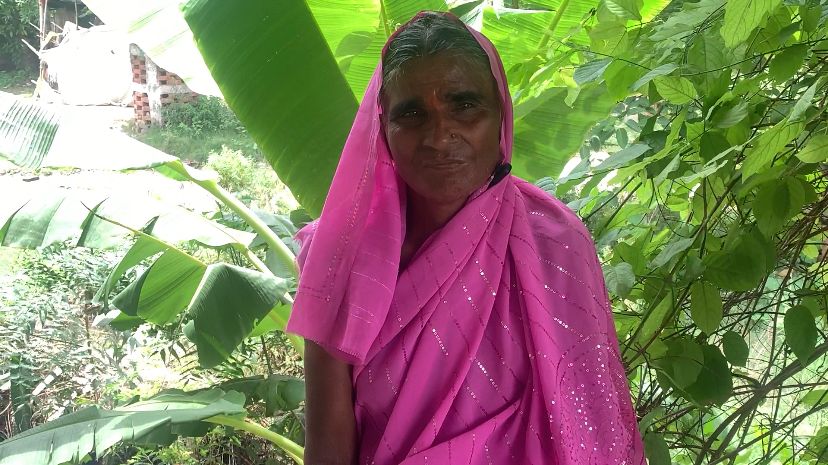
The goal set by the Global Program to Eliminate Lymphatic Filariasis was to eliminate the disease by 2020 which was subsequently revised to 2030.
Last year, according to an article published in The American Journal of Tropical Medicine and Hygiene, India still had over 23 million (2.3 crore) people suffering from lifelong disability as a result of LF.
As of 2020, according to the World Health Organization (WHO), 430 (4.3 crores) million people in India continue to require annual preventive treatment through the Mass Drug Administration (MDA) campaigns.
However, India has ramped up efforts in eliminating the disease. Union Health Minister Mansukh Mandaviya had announced that India targets to eliminate the disease by 2027 — three years earlier than the global targets.
The high-burden districts in focus are Bihar, Chhattisgarh, Jharkhand, Maharashtra, Uttar Pradesh, West Bengal, Karnataka, Odisha, Madhya Pradesh, and Andhra Pradesh.
News18 travelled to villages in Kanpur to look at the progress and noticed the winds of change.
How can India eliminate the disease?
According to the Centre for Disease Control and Prevention, avoiding mosquito bites is the best form of prevention. The mosquitoes that carry the microscopic worms usually bite between the hours of dusk and dawn and they pose the risk of spreading the disease from patients to other people.
To prevent the spread, the Union government, in coordination with state governments, launches a Mass Drug Administration (MDA) campaign every year where anti-filaria medication is given for consumption in front of the drug administrator visiting the houses in the vulnerable districts.
MDA is the WHO-recommended preventive chemotherapy strategy for LF elimination that involves administering an annual dose of medicines to the entire at-risk population. The medicines used have a limited effect on adult parasites, but effectively reduce the density of microfilariae in the bloodstream and prevent the spread of parasites to mosquitoes.
The combination consists of Albendazole tablets, Ivermectin and diethylcarbamazine citrate tablets which are used in the treatment of certain worm infections such as roundworms, hookworms, threadworms, whipworms, pinworms and other parasites.
Snakes to Scorpions, Magic Remedies Abound
For many years, lack of awareness had driven quacks and faith healers to run their businesses in the villages under Kanpur Nagar district.
They provided non-traditional therapies, ranging from frying snakes to extracting their oils and applying them to the impacted body areas, even going so far as to place a scorpion on inflamed organs.
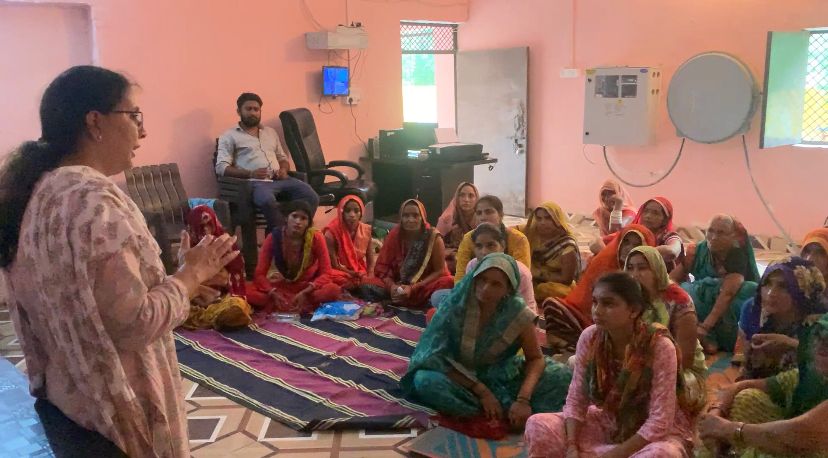
The reason for their proliferation was simple: There is no cure for filariasis. Hence, it’s easy to lure people with an exciting claim to cure their pain and disease.
Hathigaon’s Uma Shukla was diagnosed with the disease in 1975. Her husband, a farmer, was struggling with cancer and hence she desperately wanted to recover from her own illness and earn for her family. Finally, she resorted to those who ensured complete recovery.
“Some people told me to cut the face of a black snake and fry it to extract its oil,” Shukla said. Adamant, she went on to find a snake charmer who managed to find a black snake. Shukla followed the recipe. “I stored the oil in a box and messaged my leg for two to three years but saw no difference in my pain.”
She then resorted to another remedy — even more surprising and dangerous.
“I was told to look for a black scorpion as its bite would cure my disease. I finally found one on the farms. I used a wooden stick and made it sit on my leg and bite me… but my condition deteriorated further.”
Shukla is not alone. Avadesh Singh, a resident of Jugrajpur village, heard a rumour that ear piercing helps reduce the symptoms of filaria. “I got my ear pierced. It was a very small price that I had to pay in exchange for a healthy life,” he said while showing his ear.
While villagers were busy resorting to these dangerous practices, they were not serious about consuming preventive medicines. For years, they rejected the idea of taking drugs for the management or prevention of LF.
Winds of change
However, things are changing now.
Patients, including Mahendra Pratap Singh, Avadesh Singh, Uma Shukla and many others, have come together to create awareness about the disease by showcasing their own life, illness and struggle.
They have become part of a patient support network and address the concerns of villagers. This network has been formed at the behest of the state health and family welfare department by the non-profit Centre for Advocacy and Research (CFAR) with the help of the Bill and Melinda Gates Foundation (BMGF) grant.
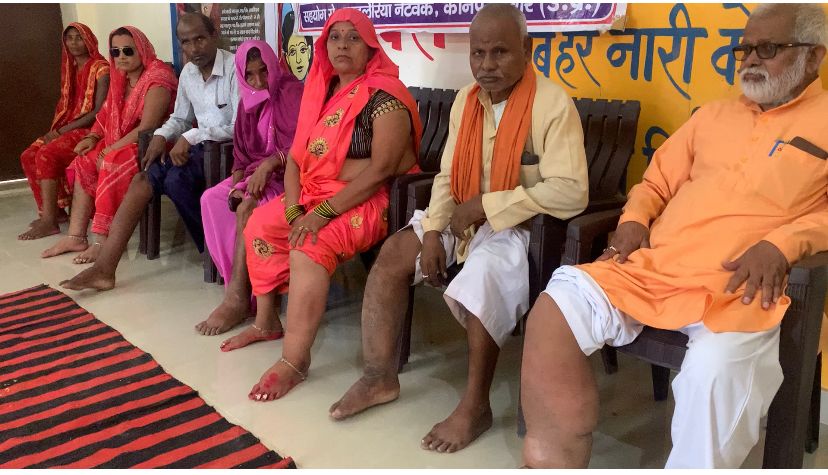
“We don’t want anyone to live the life that we were subjected to… In 1975, when I contracted this disease, everyone was ignorant… we ended up making mistakes. We want villagers to adopt all possible practices which will stop the spread,” Pratap Singh said.
Not only patients but the network consists of youngsters and relatives of patients. At present, more than 200 such groups with around 2,500 members are working across 509 villages in 10 districts of the state, including Kanpur, Ballia, Lucknow, Deoria, Fatehpur, Ghazipur, Varanasi, Sitapur, Gorakhpur and Kushinagar.
With patient networks, the stigma of the disease has also been curtailed.
For instance, Jaishankar Vajpayee used to attend the network meetings with his wife who struggles with LF. “However, when I realised that no one distinguishes between patients or stigmatises in society, I told people around that I am also suffering from hydrocele.” It is a type of LF in which the scrotum swells.
Meanwhile, the Uttar Pradesh government has been following up its strategy to fight the disease through a “Direct to Consumer” campaign with the objective of reaching out to 80 lakh families and creating awareness about preventive medicines given under MDA drives.
Role of ASHA workers and volunteers
Convincing villagers to consume the medicines given under MDA drives has been the biggest challenge. Although these medicines have been distributed since 2004, individuals have consistently found reasons to abstain from taking them, despite the fact that they are administered on an annual basis.
ASHA workers and patient support networks have been working tirelessly to create awareness around the importance of popping these medicines and following other hygiene practices.
“There are many families who have never taken the preventive tablets. I have been convincing some of those families for the last many months,” Nitika Shukla, a volunteer working on increasing awareness in Chirli village, Kanpur Nagar, said.
Radha Sadhu, an ASHA worker in Navodya Nagar’s Sarsau block, Kanpur, explained why people dodge taking the medicines.
“They believe these pills are warm in nature and have multiple side effects such as feeling nauseous. However, I have cleared their myths over and over again. I am confident that now they will choose medicines over an abnormal and painful life.”
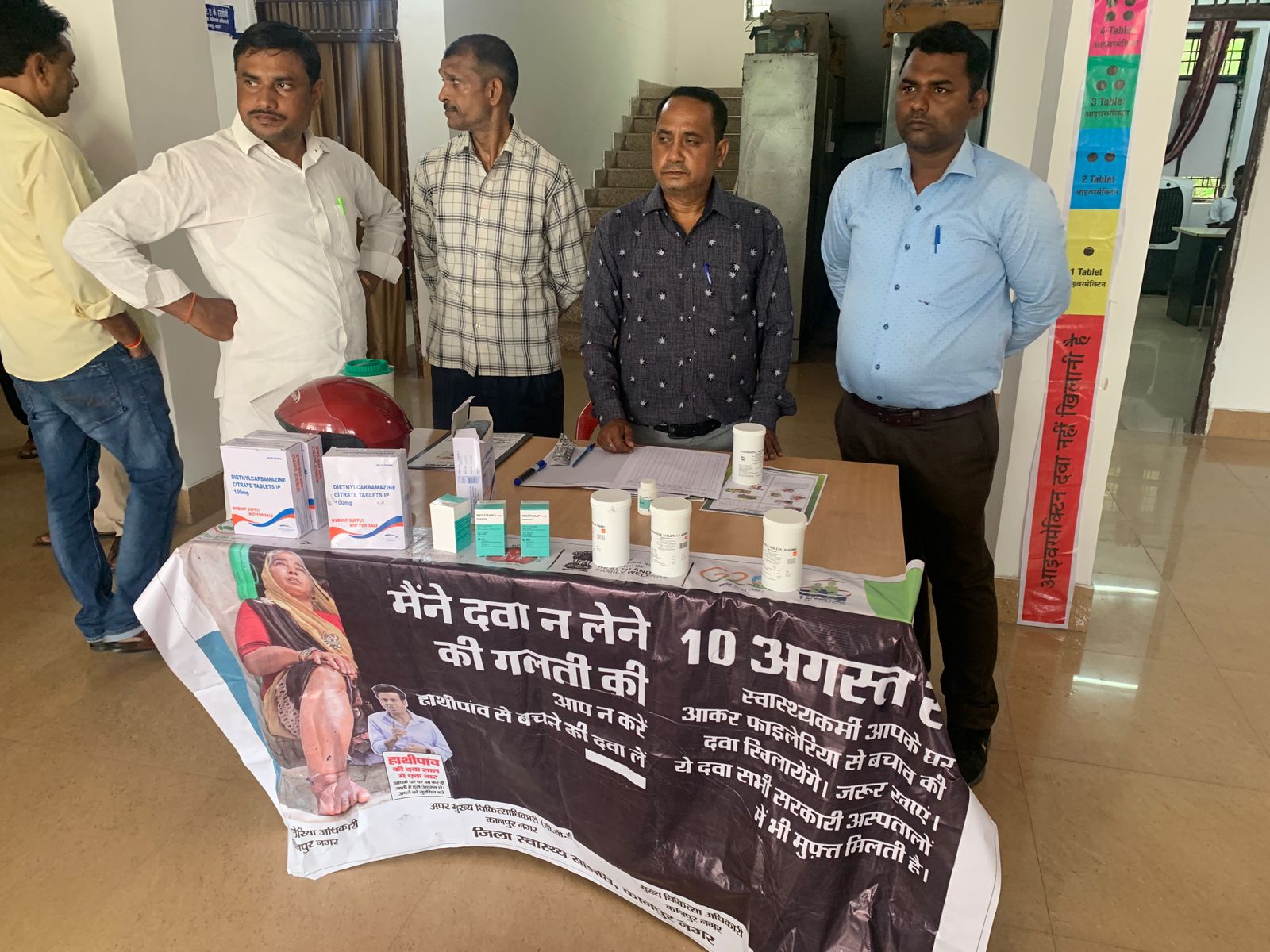
The awareness drives are also conducted in schools and ration shops. This year’s drive has been aggressively pushed by state health officers with the objective of achieving the elimination target by 2027.
“Aligning our objective with the Union government, we are putting all possible efforts and resources to eliminate LF in our areas by 2027. All teams are going home to home to make people consume medicines,” Dr Alok Ranjan, chief medical officer at Kanpur Nagar, said.
Significant positive progress: Experts
According to Dr Aditya Prasad Dash, vice-chancellor, the Asian Institute of Public Health (AIPH), Bhubaneshwar, India’s efforts to eliminate LF by 2027 have shown significant positive progress, but certain areas require further attention such as effective vector control measures, surveillance and monitoring.
Dr Nirmal Kumar Ganguly, a public health expert and former director general of the Indian Council of Medical Research (ICMR), said an independent third-party monitoring will benefit the government and sharing data with neighbouring countries will also strengthen the programme.
Ganguly said third-party monitoring can help assess the quality of interventions, evaluate the impact on disease prevalence and transmission rates, and identify any gaps or challenges in implementation.
“By incorporating climate change considerations into the planning and implementation of LF elimination programs, India can enhance its resilience and effectiveness in combating the disease,” he pointed out.



















Comments
0 comment